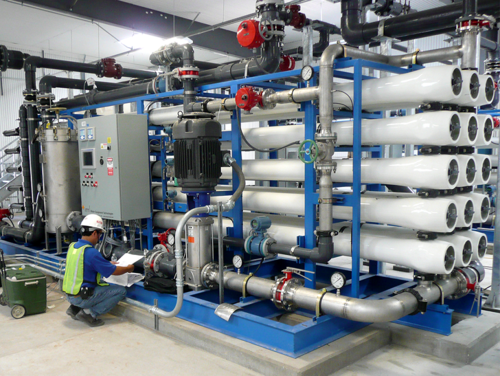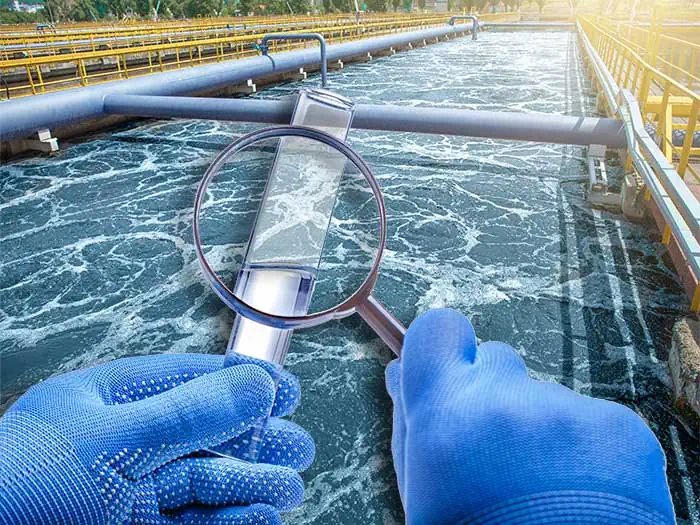Advanced Techniques for Efficient PFAS Contamination Elimination
The relentless difficulty of PFAS contamination requires the expedition of advanced elimination approaches that can efficiently resolve these hazardous materials. Innovative innovations, such as advanced oxidation procedures and numerous adsorption methods, have become appealing options in mitigating PFAS from affected settings. In addition, the duty of regulative frameworks in forming these technologies can not be overlooked, as they dictate the speed and instructions of remediation efforts. As we analyze these advanced approaches, it comes to be critical to assess their functional applications and the broader effects for ecological wellness and policy.
Comprehending PFAS Features
Although per- and polyfluoroalkyl materials (PFAS) have been widely utilized in various commercial and customer products because of their distinct properties, their persistence in the environment poses considerable challenges to public health and wellness and security. PFAS are a team of synthetic chemicals defined by a carbon-fluorine bond, among the best chemical bonds understood, which adds to their exceptional stability and resistance to destruction. This security enables PFAS to build up in the environment and living microorganisms, resulting in potential damaging wellness results.
The hydrophobic and oleophobic nature of PFAS makes them particularly effective in applications such as non-stick coatings, stain-resistant fabrics, and firefighting foams. Nevertheless, these very same buildings add to their ecological persistence, as PFAS do not quickly break down through all-natural processes. Their widespread use has actually led to common contamination of water resources and soils, making complex removal efforts. Comprehending the chemical buildings of PFAS is important for creating effective techniques to take care of and mitigate their environmental influence. The distinct qualities of these materials necessitate a nuanced technique to resolve the difficulties postured by their presence in environments and prospective human direct exposure.
Innovative Removal Technologies
The perseverance of PFAS in the environment has actually stimulated the advancement of innovative removal modern technologies focused on successfully eliminating these pollutants from impacted communities. Among the most promising methods are innovative oxidation processes (AOPs), which utilize effective oxidants to damage down PFAS compounds into much less harmful materials. AOPs can be customized to target particular PFAS structures, enhancing their efficiency.
An additional arising modern technology is making use of adsorption media, such as triggered carbon and ion exchange resins, which can selectively capture PFAS from contaminated water. These materials have actually revealed substantial elimination performances, although routine substitute and regrowth are required to maintain efficiency.
Membrane purification methods, consisting of reverse osmosis and nanofiltration, are likewise gaining grip in PFAS remediation. These techniques can efficiently divide PFAS from water, offering a viable option for treating infected sources. In addition, thermal treatment approaches, such as incineration, can disintegrate PFAS into safe byproducts, though they require cautious management to regulate discharges.
Jointly, these cutting-edge removal modern technologies stand for significant advancements in the recurring fight versus PFAS contamination, providing different strategies to bring back damaged atmospheres and shield public health and wellness.

Bioremediation Strategies
Bioremediation methods provide a promising approach to addressing PFAS contamination by using the all-natural capabilities of microbes to break down these persistent substances (m270 waste management). This technique involves making use of germs, fungis, and other germs that can metabolize or transform PFAS materials right into less unsafe by-products
Recent innovations in molecular biology and ecological microbiology have boosted our understanding of microbial areas and their prospective roles in PFAS degradation. Scientists are actively discovering details stress of germs, such as Pseudomonas and Bacillus, which have shown the capability to damage down certain PFAS compounds.
In situ bioremediation methods, where microbes are boosted directly in contaminated settings, can be specifically efficient. This strategy usually includes the application of nutrients or electron benefactors to advertise microbial growth and activity. Furthermore, ex-spouse situ methods, such as bioreactors, enable controlled problems that can maximize destruction rates.
In spite of the pledge of bioremediation, obstacles remain, including the complicated nature of PFAS helpful site substances and the need for substantial area screening - m270 waste management. Continued r & d will certainly be essential to fine-tune these strategies and assess their efficiency in varied ecological contexts
Adsorption and Filtration Approaches
Dealing with PFAS contamination usually involves utilizing adsorption and purification methods, which are created to get rid of these persistent chemicals from water and dirt. Among the various techniques, turned on carbon adsorption is extensively used due to its high surface and porosity, allowing effective capturing of PFAS molecules. Granular turned on carbon (GAC) systems are particularly favored for dealing with large volumes of polluted water, while powdered triggered carbon (POLITICAL ACTION COMMITTEE) can be used for smaller-scale applications.
Ion exchange materials likewise reveal guarantee in PFAS elimination, functioning by exchanging PFAS ions with less damaging ions in the water. This technique has actually shown performance in concentrating PFAS substances, promoting their subsequent elimination. Additionally, membrane filtration techniques, such as reverse that site osmosis and nanofiltration, operate by making use of semi-permeable membranes to different PFAS from water, effectively minimizing their concentrations.
While these methods are efficient, they need to be very carefully picked based upon the details PFAS substances existing and the environmental context. Constant advancements in products scientific research and engineering are causing the development of novel adsorbents and purification systems that enhance elimination performances and lower functional expenses, thereby boosting overall removal efforts.
Regulatory and Policy Factors To Consider
How can reliable regulatory structures enhance the administration of PFAS contamination? Extensive plans are necessary to make sure a coordinated and robust feedback to the challenges postured by per- and polyfluoroalkyl compounds (PFAS) Regulations can develop clear guidelines for surveillance, reporting, and remediating PFAS-contaminated sites, promoting accountability amongst markets and public entities. (m270 waste management)

On top of that, economic incentives and grants can be incorporated right into plans to encourage the adoption of innovative removal innovations. Policymakers must additionally prioritize r & d, making certain that emerging methods for PFAS removal are verified and applied effectively.
Additionally, public understanding and involvement are crucial parts of any regulative approach, empowering neighborhoods to promote for their health and wellness. Eventually, a well-structured regulative setting will not only boost the management of PFAS contamination but additionally advertise sustainable practices that safeguard future generations.
Final Thought
In recap, the complexity of PFAS contamination requires the adoption of sophisticated remediation techniques. Ingenious innovations such as innovative oxidation procedures, adsorption techniques, and membrane filtration have demonstrated significant effectiveness in eliminating these consistent Full Report compounds from contaminated water resources. Furthermore, regulative structures need to advance to sustain the implementation of these innovations, ensuring risk-free and efficient management of PFAS toxins. Proceeded r & d in this field stay crucial to resolving the challenges postured by PFAS contamination.